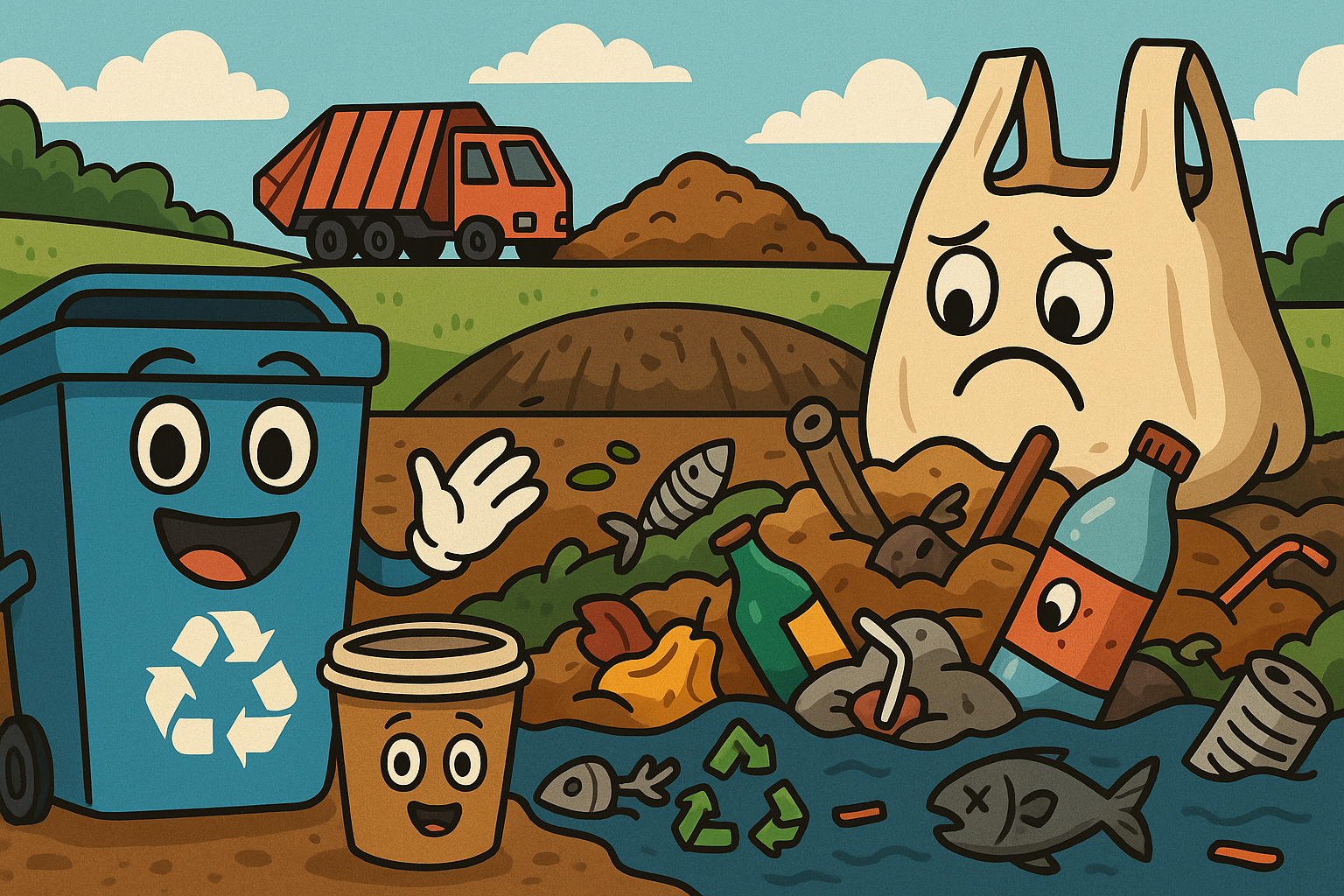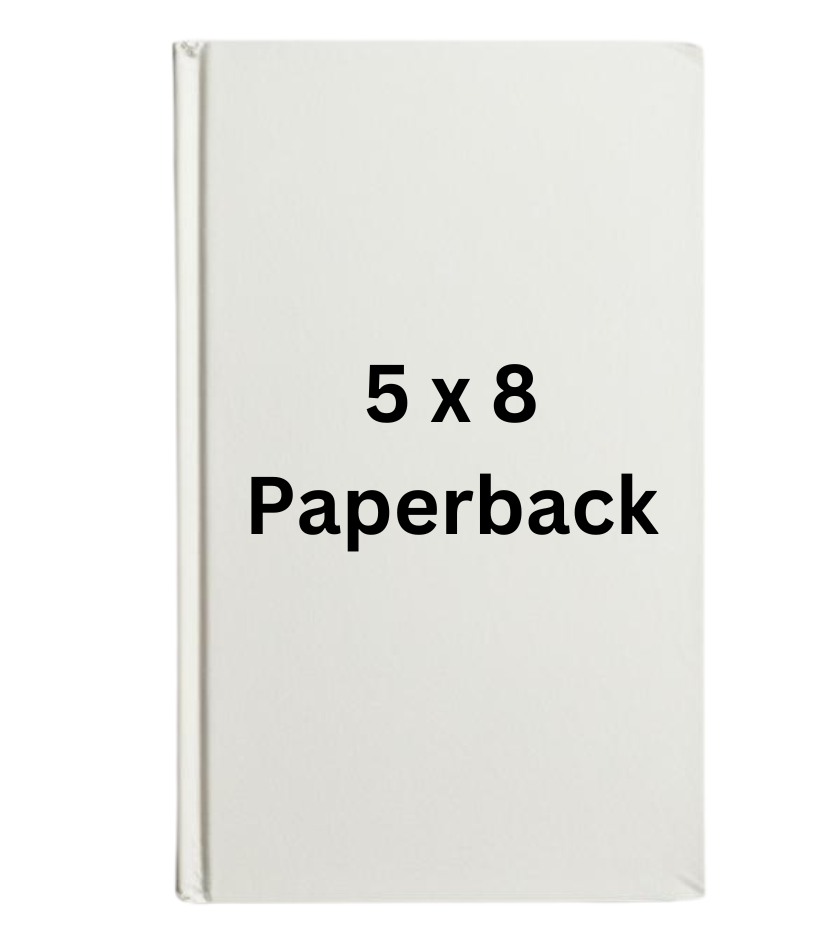
Excerpt
Introduction: Where Does It All Go?
Your snack is gone, and you’re holding an empty wrapper. Maybe you toss it in the trash can in the kitchen. Or maybe you’re outside and drop it into a bin at the park. It disappears from your hand, and that’s that. But where does it go? And what happens next?
Let’s rewind a little. Think about one full day. You wake up, brush your teeth, and toss a toothpaste box into the bathroom trash. You finish breakfast and crumple up the cereal box. At school, your pencil breaks and you chuck it. Someone spills juice in the cafeteria and uses ten napkins—straight into the garbage they go. Later, your shoelace snaps, and the shoe ends up in the donation pile because it’s too worn to fix. By bedtime, you’ve probably thrown away more stuff than you even realized. A day that felt normal actually included a lot of little goodbyes.
Now zoom out. Multiply that by every day, by every person on your street, your school, your town. That’s a mountain of things being tossed out—and fast. Some items are small, like a gum wrapper or broken crayon. Others are bigger, like an old backpack or a busted gaming controller. But whether it's tiny or tall, trash has to go somewhere. It doesn't just vanish into thin air.
Here’s the thing: not all trash is the same. The wrapper from your sandwich can’t be treated the same way as a broken tablet. Your outgrown jeans have a totally different future than a used tissue. Where something ends up depends a lot on what it is, what it’s made of, and what we decide to do with it.
Take a broken toy, for example. Maybe the leg snapped off your favorite action figure. If you throw it in the trash, it’s likely headed to a landfill. That’s a big area of land where trash is buried under layers of dirt and other trash. It’ll sit there for years—maybe even hundreds—without breaking down. Some toys can be recycled, but only if they’re made of the right kind of plastic and don’t have too many parts stuck together. Most aren’t, and they end up in landfills, too.
Now think about an empty water bottle. Toss it in the right bin—your recycling bin—and it might get picked up by a truck, sorted at a facility, and melted down to be turned into something new. But if it’s dirty, like half full of juice, or if it’s tossed into regular trash, it probably won’t be recycled. It might even get blown into a storm drain and float off to the ocean. Not great.
And then there’s clothing. If your favorite T-shirt rips, you might throw it away, but that doesn’t mean it’s done for. Clothes can be donated, reused, or even shredded and turned into insulation or stuffing. But if they go in the trash, they’ll take up space in landfills—and fabric takes a long time to break down, especially if it’s made of synthetic material like polyester.
Sometimes it’s not even about the object, but how we handle it. Have you ever tossed something into the recycling bin just because you hoped it could be recycled? That’s called “wish-cycling,” and it can actually mess up the recycling process. If something doesn’t belong, it might get stuck in the machines or ruin a whole batch of recyclables.
Even things like food scraps have a story. If you toss your apple core into the trash, it’ll likely go to a landfill where it can’t break down properly. It might rot in a way that releases methane gas, which contributes to climate change. But if that same apple core goes into a compost bin, it can break down into healthy soil that helps plants grow. One small choice can change everything.
Now think about electronics. A tablet that doesn’t charge anymore. A phone from five years ago that barely turns on. These things are full of parts that shouldn’t be thrown in regular trash at all. They have batteries, wires, and even tiny bits of metal and glass. Throwing them away is not only wasteful—it’s dangerous. They belong in special drop-off bins for e-waste. Some places even take old tech and reuse the parts in brand-new gadgets.
What’s wild is how fast stuff becomes trash. One minute it’s your new toy, the next it’s broken and forgotten. Or maybe it’s packaging—opened once, tossed instantly. Sometimes we treat things like they don’t matter, just because we’re done with them. But trash isn’t the end of the story. It’s the beginning of a new path.
Every piece of trash has to be handled somehow. It has to be collected, sorted, moved, stored, or reused. That takes trucks, people, machines, time, and money. Some of it gets burned to make energy. Some gets dumped into giant landfills. A small part gets recycled. And sadly, a lot of it ends up in places it shouldn’t—rivers, oceans, forests, or blowing down the street.
Your snack is gone, and you’re holding an empty wrapper. Maybe you toss it in the trash can in the kitchen. Or maybe you’re outside and drop it into a bin at the park. It disappears from your hand, and that’s that. But where does it go? And what happens next?
Let’s rewind a little. Think about one full day. You wake up, brush your teeth, and toss a toothpaste box into the bathroom trash. You finish breakfast and crumple up the cereal box. At school, your pencil breaks and you chuck it. Someone spills juice in the cafeteria and uses ten napkins—straight into the garbage they go. Later, your shoelace snaps, and the shoe ends up in the donation pile because it’s too worn to fix. By bedtime, you’ve probably thrown away more stuff than you even realized. A day that felt normal actually included a lot of little goodbyes.
Now zoom out. Multiply that by every day, by every person on your street, your school, your town. That’s a mountain of things being tossed out—and fast. Some items are small, like a gum wrapper or broken crayon. Others are bigger, like an old backpack or a busted gaming controller. But whether it's tiny or tall, trash has to go somewhere. It doesn't just vanish into thin air.
Here’s the thing: not all trash is the same. The wrapper from your sandwich can’t be treated the same way as a broken tablet. Your outgrown jeans have a totally different future than a used tissue. Where something ends up depends a lot on what it is, what it’s made of, and what we decide to do with it.
Take a broken toy, for example. Maybe the leg snapped off your favorite action figure. If you throw it in the trash, it’s likely headed to a landfill. That’s a big area of land where trash is buried under layers of dirt and other trash. It’ll sit there for years—maybe even hundreds—without breaking down. Some toys can be recycled, but only if they’re made of the right kind of plastic and don’t have too many parts stuck together. Most aren’t, and they end up in landfills, too.
Now think about an empty water bottle. Toss it in the right bin—your recycling bin—and it might get picked up by a truck, sorted at a facility, and melted down to be turned into something new. But if it’s dirty, like half full of juice, or if it’s tossed into regular trash, it probably won’t be recycled. It might even get blown into a storm drain and float off to the ocean. Not great.
And then there’s clothing. If your favorite T-shirt rips, you might throw it away, but that doesn’t mean it’s done for. Clothes can be donated, reused, or even shredded and turned into insulation or stuffing. But if they go in the trash, they’ll take up space in landfills—and fabric takes a long time to break down, especially if it’s made of synthetic material like polyester.
Sometimes it’s not even about the object, but how we handle it. Have you ever tossed something into the recycling bin just because you hoped it could be recycled? That’s called “wish-cycling,” and it can actually mess up the recycling process. If something doesn’t belong, it might get stuck in the machines or ruin a whole batch of recyclables.
Even things like food scraps have a story. If you toss your apple core into the trash, it’ll likely go to a landfill where it can’t break down properly. It might rot in a way that releases methane gas, which contributes to climate change. But if that same apple core goes into a compost bin, it can break down into healthy soil that helps plants grow. One small choice can change everything.
Now think about electronics. A tablet that doesn’t charge anymore. A phone from five years ago that barely turns on. These things are full of parts that shouldn’t be thrown in regular trash at all. They have batteries, wires, and even tiny bits of metal and glass. Throwing them away is not only wasteful—it’s dangerous. They belong in special drop-off bins for e-waste. Some places even take old tech and reuse the parts in brand-new gadgets.
What’s wild is how fast stuff becomes trash. One minute it’s your new toy, the next it’s broken and forgotten. Or maybe it’s packaging—opened once, tossed instantly. Sometimes we treat things like they don’t matter, just because we’re done with them. But trash isn’t the end of the story. It’s the beginning of a new path.
Every piece of trash has to be handled somehow. It has to be collected, sorted, moved, stored, or reused. That takes trucks, people, machines, time, and money. Some of it gets burned to make energy. Some gets dumped into giant landfills. A small part gets recycled. And sadly, a lot of it ends up in places it shouldn’t—rivers, oceans, forests, or blowing down the street.




